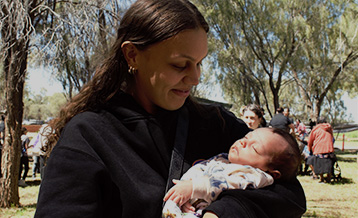News and Insights
For many Australians without a safe place to call home, judgement-free healthcare feels out of reach. But thanks to Street Side Medics, 5000 homeless people in need a year gain access to medical care, provided with dignity and respect.
From early childhood programs to aged care, the Central Australian Aboriginal Congress Aboriginal Corporation provides holistic health services to people of all ages in need. Here’s how Congress is working to close the health gap in remote communities.
Spread compression has continued. The Fund is opportunistically taking profit, where appropriate, and reinvesting.
Melbourne’s Yarra River (Birrarung) could soon be swimmable again. The Swimmable Birrarung initiative is Regen Melbourne’s exciting plan to revive the river and reshape the city for generations to come. Here’s how the non-profit is turning its bold dream into a reality.
Australian 10-yr bond yields have traded within a 50bp range over the past 12 months, a trend that we expect to continue in the forthcoming period.









